305 Livingston Street -- An Emissary From the Downtown Brooklyn That Was
Name: Mixed use retail and residential row house Address: 305 Livingston Street Cross Streets: Nevins and Bond streets Neighborhood: Downtown Brooklyn Year Built: Before 1880 Architectural Style: Probably Italianate wood frame, now neo-Classical Architect: Unknown Landmarked: No Nowhere is Brooklyn changing faster than downtown. The pace is astounding. Many of the new buildings replace parking…
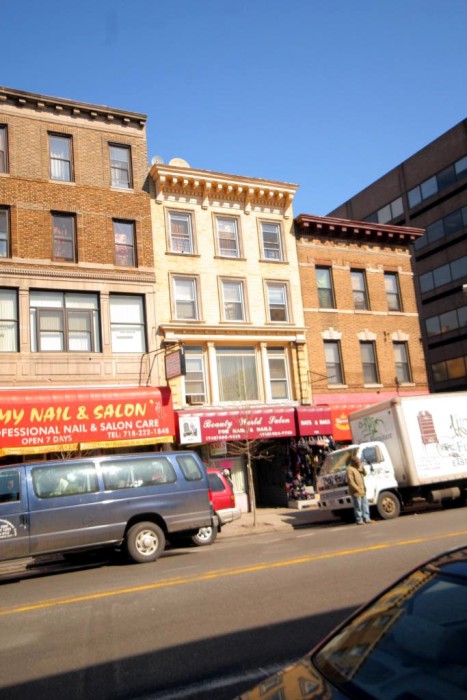

Name: Mixed use retail and residential row house
Address: 305 Livingston Street
Cross Streets: Nevins and Bond streets
Neighborhood: Downtown Brooklyn
Year Built: Before 1880
Architectural Style: Probably Italianate wood frame, now neo-Classical
Architect: Unknown
Landmarked: No
Nowhere is Brooklyn changing faster than downtown. The pace is astounding.
Many of the new buildings replace parking lots and banal government buildings that were built in the mid-20th century. But others replace much older building stock. Some of it was pretty ordinary, and some of it is a real loss. This block of Livingston Street is one of the last of the old-time small store blocks on the avenues behind Fulton Street.
Most of Livingston and Schermerhorn streets looked like this block 100 years ago. Both streets began their lives as purely residential, with rows of brownstones and wooden row houses dating mostly from the 1840s to 1860s.
As Brooklyn grew, and this area became part of the Fulton Street shopping and theater district, some of the row houses were converted into mixed-use storefronts with apartments above, and many more were torn down and replaced with commercial buildings.
305 Livingston is a holdout from the very old days.
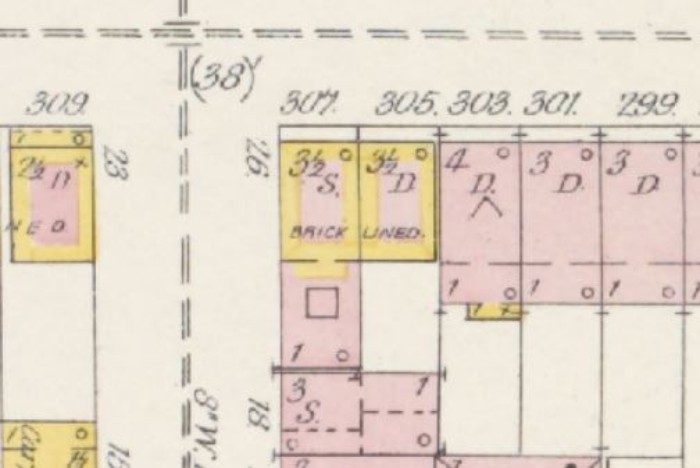
1887 map. New York Public Library
According to the insurance maps, 305 and the corner building, 307, were built as wood-framed houses with a brick lining. As early as 1879, this address was still a home, or at least the upper floors were, as seen in ad in the Eagle.

1879 ad in Brooklyn Eagle
A few years later, the shop downstairs belonged to a milliner who specialized in mourning hats and veils, as well as creating hats in the latest Parisian styles. Miss Rouse’s ad appeared in the paper in 1883.
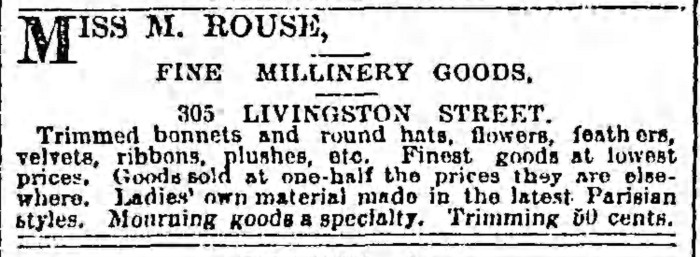
1883 Brooklyn Eagle ad
In 1889, the building was described as a three-story frame house, which still was home to Mrs. Isabella Rouse. A fire broke out in a defective flue, and the house and furnishings were damaged to the tune of $500. The fire department came quickly, fortunately, and the house was saved. In 1892, another small fire broke out, causing $300 worth of damage.
Mrs. Rouse probably had enough. This address appears as an agency office for Overland Automobiles in 1909. This was their Brooklyn headquarters, although no cars were actually sold here.
There is nothing else until 1913, when it was announced that this was to be the new location for a custom tailor named Charles S. Gerson. According to the papers, Mr. Gerson had purchased the building and totally renovated it, inside and out. He had a brand new store constructed on the first two floors.
Charles S. Gerson & Co. Inc. was a high-end men’s tailor who had previously had a shop at 192 Montague Street. His ads said he made “custom clothes of character.” His first ad in the Eagle in 1913 informed the reader that “we can tailor clothes for you that will win your preference – and perhaps set your clothes standards a notch higher.”
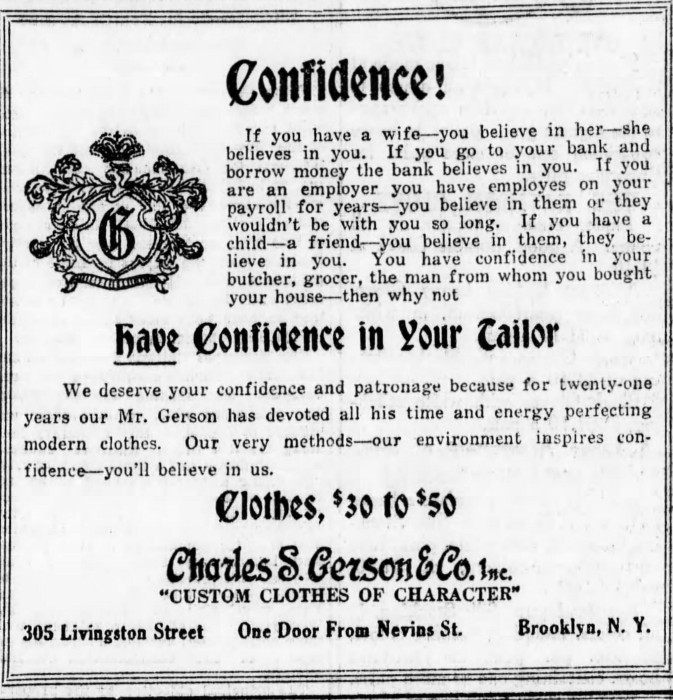
1913 ad in Brooklyn Eagle
Mr. Gerson advertised throughout 1913, and his name appears in tailors’ trade publications for several years afterwards. In 1920, the retail ads stopped and ads for the apartments upstairs appeared. After that year, all mention of 305 Livingston in the papers ceases.

1920 ad in Brooklyn Eagle
Though on first glance it can look as if the building was rebuilt, it was just the façade that was modernized, sometime in the early 20th century. According to a 1929 insurance map, linked here, this is now the only wood frame building left on the entire block.
The design is typical of that period, brick with neo-Classical details. Especially attractive are the carved window frames and the large overhanging cornice with big brackets and dentils. The storefronts were also given a classical feel, although the renovated ground floor façade is long gone.
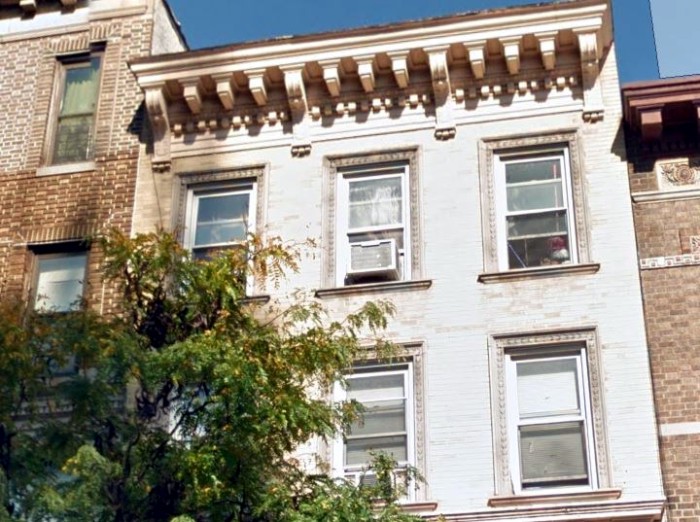
Photo: Google Maps
The building is a great example of adaptive use over a century. In 2014, it was listed for sale at $3,499,000 with six rent stabilized studio apartments, a storefront occupied by C’s World of Beauty, and a total of 3,192 square feet.
According to city records, in 1965 the property had a mortgage of $20,000, it was conveyed to new owners in 1978, who then deeded it to their son in 2010. In 1983 the property had a mortgage of $90,000 that was satisfied in 1992.
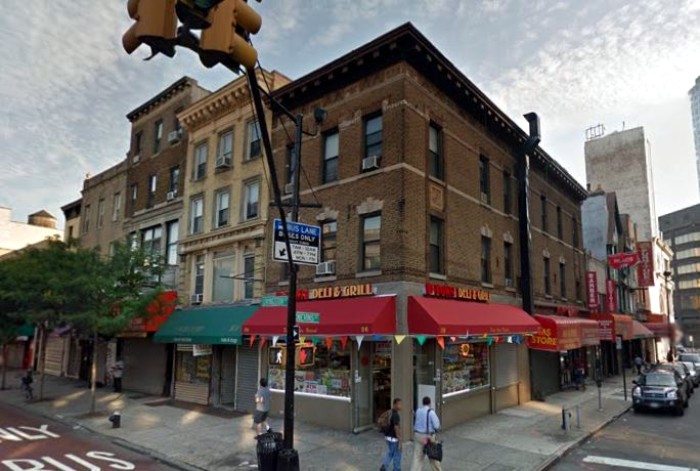
Photo: Google Maps
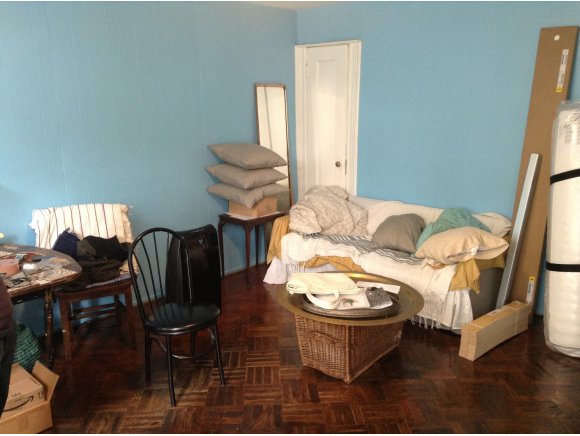
Interior of studio apartment via PropertyShark
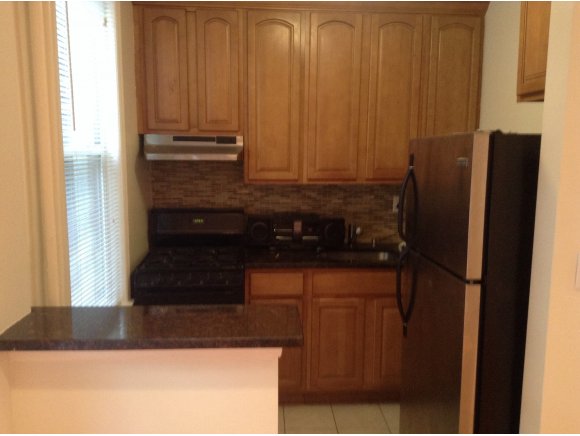
Kitchen of studio apartment via PropertyShark





I loved seeing the old news paper Adds!! Good job blank slate, that was a new angle.
Thanks Gregl. There are a few things new here. Since this property is for sale, we did deeper research of city records than we might ordinarily do — and were able to see just how much the price of this property has increased since the 1970s. We also learned that the property’s apartments are rent stabilized, which adds a wrinkle to the saleability of the building. But all this is merely additive to Montrose’s amazing work!
Did I miss something?
In other news, two doors down, two buildings to the west (299-301 Liv.) are slated to be demolished along with 8-16 Nevins Street. If this building is listed for sale, that means they may be trying to negotiate with the Nevins developer & 303 Liv. to combine lots and demolish two more as well. I think 305 is on the rent-stabilized list which could be its only lifeline at this point.